Best Shoes for Narrow Feet Reviewed & Rated

Standout Picks
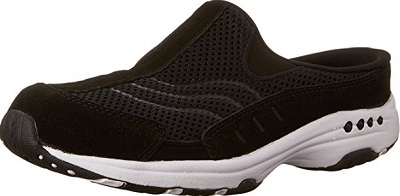
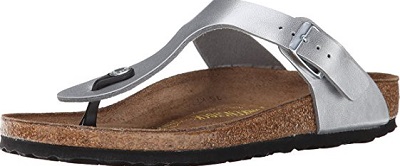
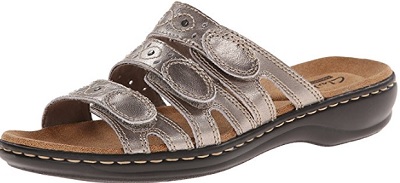
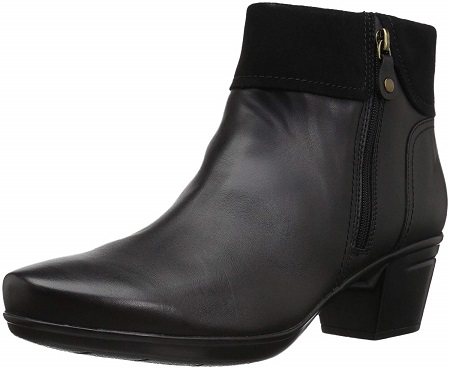
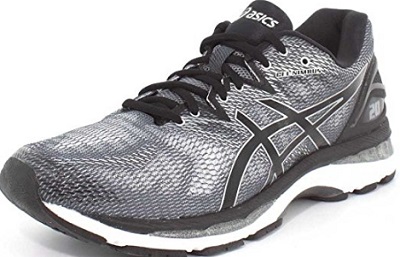
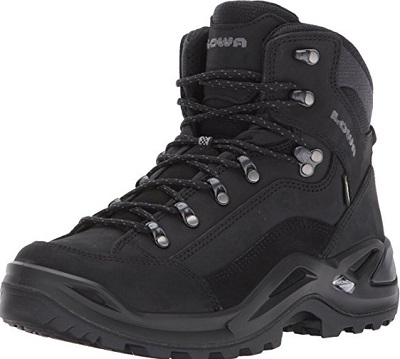
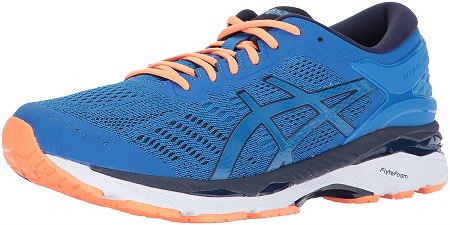
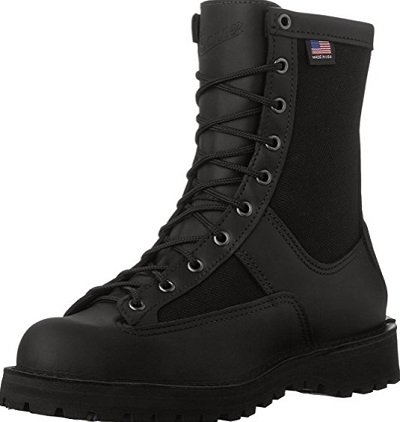
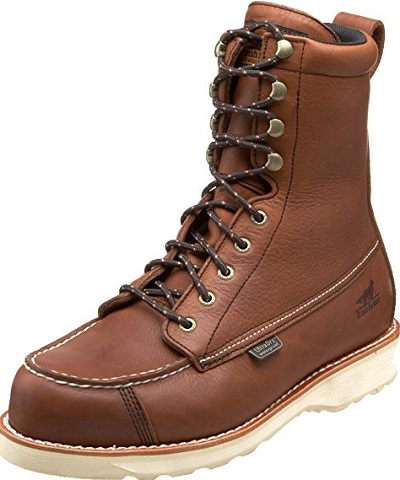
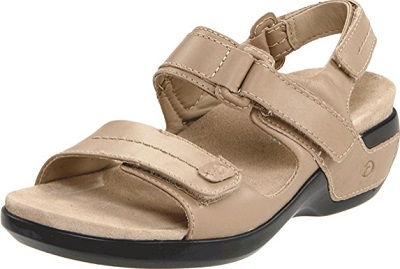
Criteria Used for Evaluation
Style
The style of shoes can determine personal preference, or even at times, help to change what we may consider stylish, per se. As you may have realized, the shoes on this list are vast in both taste and style. There is something for everyone, including but not limited to: boots, running shoes, and sandals.
Depending on your individual taste and preferences, style is subject to change. What might be tasteful and stylish to me, may not be what you like. As such, our list is vast in the area of stylistic properties.
Take, for instance, a sandal with a neutral appearance. It can be worn with shorts, jeans, or even a dress. How about a nice pair of cowboy boots? These can be worn for everyday wear or something a bit dressier, in terms of heading out to the club for a night of line dancing.
It, truly, is up to you on which pair of shoes works for that ‘perfect’ outfit, as it were. In addition, will the shoes perform to the task in which you need them to? In other words, going out to a club for a night of country-related line dancing is fine in sneakers, but how will you feel surrounded by a bunch of people wearing cowboy boots? If you are fine with it, then there are no worries. If, however, you feel at odds or out of place, as it were, then purchasing your first pair of cowboy boots might be the perfect solution.
Likewise, a pair of cowboy boots might not feel stylish when you are heading to a place for an early-morning run. Not only will you be stylistically out of place (surrounded by other runners with running shoes on) but you, also, run the risk of serious foot injury attempting a run in cowboy boots.
Now, I do understand how that previous scenario might seem a bit drastic, but the point, nevertheless, remains the same: Style is only a single part of a bigger picture (i.e. practicality).
Practicality should always be considered when thinking about the style you are going to wear. As with our cowboy boots and running scenario, the obvious choice here is to wear running shoes. After this choice has been made, now, we can enter into the style of the running shoe.
Casual shoes, dress shoes, sports-specific shoes, work shoes, and etc.; these are all separate classes with separate, individual and stylistic needs. Work shoes, for example; let’s say, “Work shoes do not need to be stylistic but functional.”
Now, as true as that statement is, there is a certain amount of mistruth in it. Take, for instance, a construction work boot. It needs to have safety features against toe injury, electrical shock, and so on. This is first and foremost. In this, the statement is, absolutely, true.
But what if the laces could be dyed to a different color? As long as it doesn’t interfere with the safety protocols of the laces themselves, then a dye could, most definitely, work in providing stylistic properties to the work boot.
Imagine; if you will, a neon-green pair of laces. Not only will you be easier to spot at the construction site but you might, also, start a fashion trend in the process, as other workers will realize that you are a bit safer than they are.
Now, I am not telling you to go out and do this, but rather, I am telling you to become imaginative. Imagination goes hand-in-hand with style; that is, there can be no style changes without the imagination to do so.
At the end of the day, we want you to enjoy each and every moment while wearing your shoes. This is why we give you as much information as we can, in order to provide you the best decision possible.
Fit
The fit is highly important, as this determines foot health and safety against injury. The fit is recognized, in general, as attributes involving heel, toe box area, arch layout, length, width, and overall support. To get a better idea of each attribute, let’s examine them.
Fit (Arch Layout) – Arch Layout is a mathematical term used in relation to a compass drawing tool. Starting a pivotal point, the compass is set to a degree (e.g. 30 degrees, 40, degrees, etc.) in order to make an arch line. The resulting line is, in essence, the arch layout. For feet, however, there is an easier method to help determine which type of arch (normal, flat, or high) you have. It is known as the wet test and requires very little in way of supplies.
Supplies needed for wet test – You will need a piece of paper (bigger than your foot; like a brown paper bag from the grocery store), a reservoir to hold water (a small pan works wonders), water, and your feet.
Fill the pan with shallow water; just enough to cover the bottom of your foot.
Place the paper down flat; next to your pan.
Place your foot into the pan of water.
Remove your foot from the pan and place on paper; bearing even distributed weight on both of your feet (normal stance).
Remove your foot and look at the paper. There will be one of three patterns (normal, flat, or high) you will see. This is your arch type.
Examining the results of the wet test – There is one of three separate results you can achieve via the wet test. By examining the pattern left behind, you can determine your arch type.
If you are able to see at least half of your arch width, then you are one of the lucky ones out there and have a medium arch with normal pronation. This means you are able to utilize most shoes out there, good for you!
If you see most of your arch’s width, then you are most likely an overpronator and have flat arches. This means your feet have a tendency to collapse inward too much and are highly prone to ankle-related injuries. This means you need shoes having more stability and are designed with midsoles catering to overpronators, such as a dual-density midsole.
If you see very little of your arch width, then you are known as an underpronator and have high arches. This means you will need shoes with very little arch support, little-to-no stability support, and is highly cushioned.
Understanding the type of arch you have directly determines what kind of shoes are eligible to be a better fit. Shoes for pronators, with medium arches, are not the correct shoe for an overpronator or someone with flat arches. An overpronator needs more arch support than what is found in a medium-arch supported shoe. Likewise, a shoe designed for an overpronator will never be good for someone having high arches. Take the wet test and determine your arch type. In doing so, you are better equipped to find the best narrow feet shoes.
Fit (Heel) – The heel fit is an attribute corresponding to up and down movement; as well as, lateral movement in conjunction with your heel. Shoes which are too loose will not play well when you begin your normal stride or a juke from side to side. For example, if you begin walking and you feel your heel rise from the shoe, then the pair of shoes you are in is currently too loose. They are not properly fitted within the heel area. Additionally, if you can switch your pressure to the ball of your foot and pivot, there should be no room felt in the heel area. If you are able to feel any form of your heel moving, not in tandem unison with your shoe, then you do not have the best shoe brands for narrow feet.
A properly fitted shoe in the heel area helps to prevent bruising, skin irritation, blistering, callouses, and other forms of heel-related health concerns. Also, a properly fitted shoe in the heel area will ensure proper shock absorption; thus, reducing the risks of shock-absorbent related injuries (i.e. ankle sprains, joint pain, and etc.).
Fit (Length & Width) – Length is the measurement of your largest foot (yes, most of us have one larger than the other); from your heel to the end of the largest toe. Width is usually found in the area at the ball of your foot. Using a ruler, measure your largest foot.
A ruler works best, but a tape measure will suffice; especially, for those of us having larger feet.
Length
Lay the ruler down on a flat surface (floor) with the higher numbers facing away from you.
Place the heel of your foot where you can barely see the one-inch mark. I find this is a more accurate placement than trying to figure out where zero is; that is, some rulers are nicer than others.
Place the largest toe down at the other end of the ruler.
Write down your measurement of the larger number and subtract one from it. This is the length of your foot.
Width
Like you did previously when measuring the length of your foot, you are going to lay the ruler down on a flat surface; only this time, lay it down horizontally. Make certain the lower number is on the left and the higher number is on the right.
First, slip the ruler under your largest foot to the point where your foot is the widest (usually, the ball area).
After you find the widest point, move the one-inch mark to where you can barely see the line at the left side of your foot.
With your foot now relaxed, examine the number on the right side of your foot. Write it down and subtract one from it. This is the width of your foot.
Measurements should be taken at the end of your day. This is the time when your feet will be their largest, and the true measurement you will need to ensure a properly fitted shoe. If the width is too tight but the length is fine, then purchasing a shoe size bigger will not help. This is because the shoe length will now be too long. For anyone who is active, a shoe which is too long can lead to injury; especially, during a quick-stop and/or lateral movement. From experience, I understand this all too well. Take care and measure your feet at the right time of the day. After it is said and done, you will be even more ready to purchase the shoes for narrow foot.
Fit (Toe Box Area) – Hopefully, you have your measurements ready from the previous section. If not, you are going to wish you took the measurements, because you will need to add one-half inch to the total length of your foot. This is how much room there needs to be in order for the toe box area to be properly fitted; lengthwise. Now, for widthwise, you will only need the number you already have.
Never negotiate how the shoes feel on your feet; including, the toe box area. Shoes designed for narrow feet can cause medical health concerns with those having wider feet, such as bunions, hammer toes, and etc. Likewise, people with narrow feet should never wear shoes designed for those having wider feet. There is too much ‘play’ in the shoe and this can cause skin irritation, bruising, callouses, and promote foot-related injuries.
Just as the heel area is the first to land while you walk; the toe box area is the last to leave the ground during your stride. As such, properly fitted shoes will work with your natural gait. A shoe which does not fit correctly, however, will have the opposite effect. In other words, the toe box area is just as important as the heel area; especially, in relation to proper fit. Never negotiate how the shoes feel on your feet.
Support
Overall support of the shoe will directly impact the fit of the shoe. As previously mentioned, a shoe specific to one pronation type will not properly support a foot of another pronation type. Moreover, if the shoes cannot support your feet in the proper way, in specific relation to you; then, they are not the best shoes for narrow feet. The best shoes for narrow feet will support all areas with equal prejudice; that is, your feet will be supported in the heel, toe box area, arch area, length, and width, respectively. If any or all parts of the shoe cannot give you the proper support you need, then the shoe never be considered a proper fit. After all, what good is a shoe if it fits in measurement but fails in support?
Support takes a few things into consideration, such as arches, heel, toe box room, load-rate, lateral movement, quick stop, and shock absorption. Although these characteristics are not the only assets when examining support, they are something to consider.
Arches – You arches determine the type of shoe structure you can wear. It is not the other way around. As previously discussed, there are three types of arches (normal, flat, and high).
Heel – Heel fit is an attribute which takes into account slippage (up and down) and lateral movement (side to side).
Lateral Movement – Lateral movement is a shoe’s ability to absorb shock when you juke and/or move laterally. Furthermore, the shoe helps to stabilize; providing you with additional foot and ankle support. This type of support has a heavy presence in basketball shoes.
Load-Rate – More specific to running implications, load-rate is the speed at which energy is spread from your feet to your joints (i.e. ankle, knees, and hips).
Quick-Stop – Quick-stop is the motion you make when you are moving quickly and then, abruptly, stop. The motion can be forward or backward. For example, in a forward quick-stop, shoes which are too big can result in injury; as the toes will have a tendency to slam into the toe box area.
Shock Absorption – Most centrally directed shock-absorbent technology is found in athletic shoes of various types. That is, dress shoes are less-likely to design their shoes around the concept of shock absorption when compared to a pair of athletic shoes. The best shock absorption utilizes multiple factors within a shoe to help alleviate impact load-rate; as well as, giving an overall energy return (bounce back, or a bouncy feeling when you walk, jog, jump, and/or run). The most common factor associated with shock-absorbent technology is found within a midsole.
Comfort
Comfort levels are heavily weighted when choosing the shoes for narrow feet. Let’s face it, the truth is when our shoes are uncomfortable, our day is uncomfortable. Furthermore, there are health concerns associated with uncomfortable feet, as a result of incorrect footwear. The risks include but are not limited to: ankle sprains and/or dislocation, athlete’s foot (tinea pedis), hammer toes, bunions, bruising, skin irritations and/or abrasions, joint pain (ankle, knees, and/or hips), and other factors.
Your body has a way of letting you know when something is not right. Moreover, if your feet are uncomfortable when wearing a particular pair of shoes, then the shoes are more than likely the cause for your body’s alarm to be triggered. The feeling of discomfort is your body’s way of telling you something needs to be changed, in order to prevent any short and/or long-term damage. Although sometimes irritating to us, the body is only talking to us; begging for a change.
When a shoe is properly fitted in all aspects (heel, toe box, arch, and etc.); then, the comfort level automatically rises. As such, comfort can only be achieved when shoes are correctly fitted. Furthermore, a properly fitted shoe must, also, be used for the job-at-hand. In other words, we don’t want to wear dress shoes to play baseball in. In following our body’s directive, we can be better equipped to find the shoes for narrow foot.
Eyelet Positioning – A very good indicator your shoes are too wide is the shoelace test. If you tie your shoelaces and the eyelet flaps are touching (or very close), your shoes are too wide. Likewise, if the eyelet flaps have a pronounced vee-shape (after lacing your shoes), then your shoes are too narrow.
Size is not Width – Size is not width, it is the length. Your shoes may fit well from heel-to-toe but remain tight, as a result of the shoe’s width. Width size, in and of itself, may mean a four-inch wide foot is narrow in one shoe but is a normal width within a larger shoe size. One of the ways you can gauge a shoe’s length is to check where the ball of your foot aligns in conjunction with the widest part of the shoe. In other words, if the widest part of your foot does not align with the widest part of the shoe, then your shoes are either too short (the widest part of foot sits closer to you than the widest part of the shoe) or too long (the widest part of foot sits further away from you than the widest part of the shoe).
Also, familiarizing yourself with a particular brand does not necessarily mean a larger shoe size will still require a narrow choice. With size changes, the meaning of your foot’s width can, also, change. Feet can continue to grow the length of your lifespan. As such, it is important to take new measurements prior to purchasing your shoes. In doing so, you are well on your way to choosing the shoes.
Durability
To assess each of the products on our list for durability, we not only read through thousands of customer reviews on our recommended products, but we also looked for some of the hallmarks of quality construction. From brand name reputation to their initial smell out of the box, there are a few ways of identifying a well-built, made-to-last product.
The Details
A zipper that doesn’t zip or snaps? Poor threading technique? A smelly, chemical residue on the shoe when you open the box? All these details were looked for an evaluated when assigning a score for durability.
Materials
Certain materials last longer than others, even if that comes at the expense of a higher score in the “comfort” criterion. Materials that are synthetic, thicker and firmer tend to score higher on durability.
Product Purpose
A shoe made for running and high-impact sports will not likely last as long as a good pair of general activity shoes and that’s okay. Being aware of the shoe’s purpose is critical for you as a reader and for us as a reviewer. Although shoes that will last longer score higher on this criterion, you might also see high scores to shoes with a more limited durability, if that product was specifically designed for certain purposes that involve high-impact and high-stress motions. We take into account the type of shoes you are trying to purchase when assigning scores to shoes in this criterion.
Brand Name
A product is a promise made, but a brand is a promise kept. A brand name is often a signal of quality and consistency in construction and durability from product to product. Although there are always exceptions to this rule, quite often brands that perform continue to perform. Brand names on our list tend to score higher in the durability score.
The final word on durability is that a higher score on this metric means the product will last longer than its competitors, given similar shoe purpose, type, age and usage. Again, it never hurts to read some customer reviews before hitting the “buy” button.
Top 10 Shoes for Narrow Foot
1. Easy Spirit Traveltime Mule
This mule feels akin to a tennis shoe with its fabric leather upper. Furthermore, these shoes are created to keep you cool, and with an EVA midsole to add support, this athleisure mule promotes both comfort and breathability. Next, there is a removable foam cushion insole to give you more options. Lastly, the rubber outsole is certain to help aid in better traction. As such, this pair of best shoes for narrow feet is a great choice.
The upper is made to allow your feet to breathe. Moreover, the fabric leather helps your feet to remain cool. For anyone desiring a day of leisure in style, this pair of mules will not disappoint. First, the EVA midsole will help you gain more support through the aid of shock absorption. Secondly, this midsole is great for adding comfort; thereby, promoting good foot health. Lastly, when comfortability rises, you are more likely to feel better in the long-run.
These shoes are budget-friendly, and their inspired tennis shoe design makes them a great choice; for purchasing a pair of 'feel-good' mules. With an EVA midsole to aid in support and a removable insole, this pair of best shoes for narrow feet is an excellent buy.
2. Birkenstock Gizeh
Featuring an adjustable vamp strap with buckle closure, this pair of best shoes for narrow feet is stylish. Not only that, but this pair of thong sandals is made with a cork midsole and a contoured footbed. In addition, these sandals will help to keep your feet cool in a nice day of leisure activity. As such, these shoes are definitely worth adding to your shoe collection.
The cork midsole adds cushioning to this pair of thong sandals; making them one of the best shoes for narrow feet. Add to this fact the sandals have a contoured footbed to help raise comfort levels even higher, and these shoes then become a must-have.
Firstly, the adjustable vamp strap with buckle closure is a promoter for foot stability. Secondly, with the addition of the rubber toe post, comfortability rises. Lastly, this overall design looks great with the care taken in stylish awareness. These thong sandals are budget-friendly with regard to the high-quality and stylish design they are made of. Moreover, this pair of best shoes for narrow feet is well-equipped to aid in both comfort and stability. As such, these shoes are well worth the purchase price.
3. Clarks Leisa Cacti
Eye-catching, these Clarks are sure to make your narrow feet happy with Velcro closures. An Ortholite footbed promises to bring comfort while the rubber outsole ensures decent traction. The platform height is modest at 0.25 inches, and there is a 1.33-inch heel height, as well. The full-grain leather is, also, a nice addition to these sandals. Perfect for jean wear or something a little more dressy, these sandals have a wide blend capability with wardrobe matching.
This is a footbed that makes you realize how important comfort, truly, is. Moreover, this Ortholite footbed feels good the moment you slip your feet into these sandals. The closure system is important for those with narrow feet, as either Velcro and/or buckles should be present in a sandal to ensure proper fit. With this closure system in place, narrow feet gain the benefit.
Comparable to other shoes on this list, these Clarks are budget-friendly. Moreover, they have a relaxed tone about them and are made of high-quality materials. As such, you cannot go wrong with this purchase when adding to your footwear collection.
4. Clarks Emslie Twist
Pairing a suede cuff with an upper made of full grain leather adds contrast and style to the Clarks boot, while an Ortholite footbed keeps your feet comfortable and happy all day long. The block heel is a modest 2.2" with a half inch platform, giving you some extra height without impacting overall comfort and stability. Zipper closures on the side make them easy to put on and take off.
Ortholite is one of my favorite shoe technologies to talk about. This open-cell foam is one of the best insole materials available. The shoe is eco-friendly and made of up to 30% post-recycled material, reducing its carbon footprint. It performs similarly to memory foam in that it gently contours to the shape of your foot to provide customized support. However, the open-cell design means it is more breathable than most memory foams. It also has a long-term compression rate of less than 5%, which allows it to properly hold its shape longer.
When it comes to any heeled shoe, comfort and stability are important. Comfort will allow you to wear the shoes all day without pain or fatigue, while stability will ensure you have solid footing and aren't as likely to slip or fall. Block-style heels are often the ideal choice for both of these needs. Block heels have a larger surface area on the bottom, providing more stability than their slimmer counterparts. This also improves comfort, as it takes some of the weight off of the balls of your feet. They're also quite stylish too.
5. Asics GEL-Nimbus 20
Some shoes look really cool, and this is one of those pairs of shoes. Designed for the runner in mind, flex-groove technology flows in tandem unison with the mesh upper to give you the highest quality in both comfort and stability. Furthermore, the padded collar and heel-clutching system create a better fit; thereby, allowing you to focus on the run ahead in comfort.
This pair of running shoes comes equipped with a gait-enhancing impact guidance system. This means from the moment your heel touches the ground, to the moment when your toe lifts, this pair of shoe brand for narrow feet will have your foot health in mind.
The mesh upper is created to allow your feet to breathe and remain cool. Furthermore, the overlay system is designed to flex in conjunction with your stride. This provides both comfortability and stability. Lastly, the design is beautiful and aesthetically pleasing.
6. Lowa Renegade GTX
These hiking boots are created to help give you maximum comfort and stability. Utilizing a Vibram EVO outsole, a climate-controlled footbed, and a speed-lacing system, these shoes for narrow feet are ready for the trails. Additionally, these hiking boots have great transitional traction. Lastly, with the PU Monowrap frame at the midsole, your feet will enjoy the benefit of added shock-absorption while, also, having a sturdier foothold.
A firmer fit results from the padded tongue and collar. This creates an environment which allows your feet to feel more secure and stable. Furthermore, your feet will remain comfortable, as you traverse trails in style. The Vibram EVO outsole allows for better traction, more stability, and gives you both of the previous with comfort. Designed for trails, these shoes will not disappoint when transitioning from dirt to rock, or vice versa.
This pair of hiking boots prices from upper-mid to lower-high in cost range. Made with high-quality materials, these boots are justifiable in their pricing. As such, this pair of shoe brand for narrow feet is worth their price.
7. Asics Gel Kayano 25
Featuring a wide range of technologies such as an Impact Guidance System and Flytefoam Propel, the Gel Kayano 25 from Asics is designed top to bottom with comfort at the forefront. The Impact Guidance System works to enhance and follow your natural gait, while the Flytefoam Propel material is designed to promote the "bounce" and energy return you've come to expect from Asics shoes.
The Impact Guidance System (IGS for short) is more of a design philosophy than it is a technology in the traditional sense of the word. This design method is the result of years of research and development, and involves components that are linked together. These components come together to promote your natural gait rather than try to correct it, from the moment your foot leaves the ground to the moment your foot strikes it again.
Flytefoam is present in two manners in the Kayano 25: Flytefoam Propel and Flytefoam Lite. While they employ similar methods, they are designed to work in very different ways. Flyteffoam Propel is an elastomer compound that promotes energy return, providing that "bounce" that Asics shoes are known for. Flytefoam Lite is designed with organic nanofibers, creating a midsole that is comfortable and supportive while retaining the shoe's overall light weight.
8. Danner Acadia
These Danner Acadia's are built to last. With 1000 Denier-coated CORDURA® nylon and a fiberglass shank in place, your feet will be more secure. Furthermore, the Gore-Tex lining adds additional breathability in conjunction with the mesh upper design. This means your feet will remain cool; even under stressful situations. As such, this pair of best narrow feet shoes is ready for your next mission.
The upper is made with strength in mind; that is, these boots are designed for action and are ready to handle most tactical situations. Also, waterproof, the upper allows your feet to breathe while in stressful situations. This lining is made to allow your feet to breathe. Additionally, it is in place for comfort. With these two working in tandem unison, you will be able to concentrate more on the task-at-hand.
The cost-range associated with this pair of tactical boots is in the mid-to-upper end. With that being stated, these boots are made from high-quality, durable material. Additionally, they are designed with elemental resistance; waterproof. As such, this pair of shoes is worth the purchase price for anyone interested in tactical footwear.
9. Irish Setter 808 Wingshooter
This pair of shoes for narrow foot is made for the hunter/huntress in most weather conditions. Created with waterproofing leather and a quick-dry afterward system, these hunting boots are designed to withstand the elements. Furthermore, the removable polyurethane footbed allows for easier cleaning to help keep the muck and mire at bay.
Hunting requires being exposed to the elements. These boots are ready for Mother Nature in all of her glory. The UltraDry waterproof technology resists water. Moreover, when dampness strikes, you will be armed with quick-drying results. The top of the boots replaces eyelets with speed-lace hardware. Every hunter understands the importance of being able to relax when you can, and the need to be quick during the other times. As such, this speed-place system is perfect for the call of the wild.
These hunting boots range in the mid-to-upper in cost association. With their high-quality build, however, they do not seem overpriced. AS such, any hunter would do very well in adding this pair of shoes for narrow feet to their hunting collection.
10. Aravon Katy
With the removable Velocor footbed, leather upper, the Primalux Comfort Cushioning, and the ABZORB cushioning full-length insert, these sandals proudly announce the ideology of comfortability. Additionally, the leather upper is made to last and provides a modern look with a stylistic choice. Moreover, this pair of shoe brands for narrow feet is well designed.
ABZORB cushioning is a removable, full-length insert which adds additional support to the already supportive Primalux comfort cushion. In essence, these shoes are made for warmer days when comfort and a great fit are desired. The leather upper is built to both last and look good for the time you wear your sandals. They are easy to slip on; yet, retain the added benefit of being able to quickly create a firm fit.
The cost range for this pair of best shoes for narrow feet ranges in the mid-to-upper. With the leather material, cushioning system, and overall design, however, these shoes are well worth the purchase price.
Sources
- , How to Tell If My Shoes Are Too Big or Wide, Article
- , How Should Shoes Actually Fit?, Article
- , How To Tell If Your Shoes Fit Properly, Article
- , How to Find Your True Shoe Size, Article
- , 6 tell-tale signs your dress shoes don't fit correctly, Article
- , The Arch Angle Method Of Fitting Ladies' High Heeled Shoes With Sach Feet, Article; Research
- , What Does ‘Arch Support’ Really Mean?, Article














